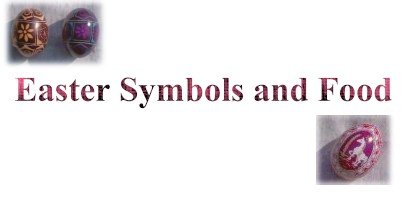 |
|
| Among the popular Easter symbols, the
lamb is by far the most significant of this great feast.
The Easter lamb, representing Christ, with the flag of
victory, may be seen in pictures and images in the homes
of every central and eastern European family. The oldest prayer for the blessing of lambs can be found in the seventh-century sacramentary (ritual book) of the Benedictine monastery, Bobbio in Italy. Two hundred years later Rome had adopted it, and thereafter the main feature of the Pope's Easter dinner for many centuries was roast lamb. After the tenth century, in place of the whole lamb, smaller pieces of meat were used. In some Benedictine monasteries, however, even today whole lambs are still blessed with the ancient prayers. The ancient tradition of the Pasch lamb also inspired among the Christians the use of lamb meat as a popular food at Easter time, and at the present time it is eaten as the main meal on Easter Sunday in many parts of eastern Europe. Frequently, however, little figures of a lamb made of butter, pastry, or sugar have been substituted for the meat, forming Easter table centerpieces. In past centuries it was considered a lucky omen to meet a lamb, especially at Easter time. It was a popular superstition that the devil, who could take the form of all other animals, was never allowed to appear in the shape of a lamb because of its religious symbolism. |
|
In Christian times the egg had bestowed upon it a religious interpretation, becoming a symbol of the rock tomb out of which Christ emerged to the new life of His Resurrection. There was in addition a very practical reason for making the egg a special sign of Easter joy since it used to be one of the foods that was forbidden in Lent. The faithful from early times painted Easter eggs in gay colors, had them blessed, ate them, and gave them to friends as Easter gifts. The custom of using Easter eggs developed among the nations of northern Europe and Christian Asia soon after their conversion to Christianity. In countries of southern Europe, and consequently in South America, however, the tradition of Easter eggs never became popular. The Roman ritual has a special blessing for Easter eggs:[59]
In medieval times eggs were traditionally given at Easter to all servants. It is reported that King Edward I of England (1307) had 450 eggs boiled before Easter, dyed or covered with gold leaf, which he distributed to the members of the royal household on Easter Day.
In some parts of Ireland children collect goose and duck eggs during Holy Week, offering them as presents on Easter Sunday. Two weeks previous, on Palm Sunday, they make little nests of stones, and during Holy Week collect as many eggs as possible, storing them away in these hidden nests. On Easter Sunday, they eat them all, sharing with those who are too small to have their own collection. |
|
The grownups, too, give eggs as presents in Ireland. The number of eggs to be given away is regulated by this ancient saying among Irish country folk: "One egg for the true gentleman; two eggs for the gentleman; three eggs for the churl [have-not]; four eggs for the lowest churl [tramp]." In most countries the eggs are stained in plain
vegetable dye colors. Among the Chaldeans, Syrians, and
Greeks, the faithful present each other with crimson eggs
in honor of the blood of Christ. In parts of Germany and
Austria, green eggs alone are used on Maundy Thursday,
but various colors are the vogue at Easter. Some Slavic
peoples make special patterns of gold and silver. In
Austria artists design striking patterns by fastening
ferns and tiny plants around the eggs, which show a white
pattern after the eggs are boiled. The Poles and
Ukrainians decorate eggs with plain colors or simple
designs and call them krasanki. Also a number of their
eggs are made every year in a most distinctive manner
with unusual ornamentation. These eggs are called pysanki
(from pysac: to write, to design); each is a masterpiece
of patient labor, native skill, and exquisite
workmanship. Melted beeswax is applied with a stylus to
the fresh white eggs, which are then dipped in successive
baths of dye. After each dipping, wax is painted over the
area where the preceding color is to remain. Gradually
the whole complex pattern of lines and colors emerges
into something fit for a jeweler's window. No two pysanki
are identical. Although the same symbols are repeated,
each egg is designed with great originality. The symbols
used most are the sun (good fortune), rooster or hen
(fulfillment of wishes), stag or deer (good health),
flowers (love and charity). As decorative patterns the
artists use rhombic and square checkerboards, dots, wave
lines, and intersecting ribbons. The pysanki are mainly
made by girls and women in painstaking work during the
long evenings of Lent. At Easter they are first blessed
by the priest and then distributed among relatives,
friends, and benefactors. These special eggs are saved
from year to year like symbolic heirlooms, and can be
seen seasonally in Ukrainian settlements and shops in
this country. In Germany and other countries of central Europe eggs for cooking Easter foods are not broken but pierced with a needle on both ends, and the contents to be used are blown into a bowl. The empty eggshells are given to the children for various Easter games. In parts of Germany such hollow eggs are suspended from shrubs and trees during Easter Week much like a Christmas tree. The Armenians decorate empty eggs with pictures of the Risen Christ, the Blessed Virgin, and other religious designs, to give to children as Easter presents. Easter is the season for games with eggs all over Europe. The sport of egg-pecking is practiced in many forms, in Syria, Iraq, and Iran, as well. In Norway it is called knekke (knock). In Germany, Austria, and France, hard-boiled eggs are rolled against each other on the lawn or down a hill; the egg that remains uncracked to the end is called the "victory egg." This game has attained national fame in America through the annual egg-rolling party on the lawn of the White House in Washington. Here is a description by a visitor to Washington of such a contest several generations ago, when this Easter sport took place on the terraces below the Capitol, and not as in later years on the White House lawn: "At first the children sit sedately in long rows; each has brought a basket of gay-colored, hard-boiled eggs, and those on the upper terraces send them rolling to the line on the next below, and these pass on the ribbon-like-streams to other hundreds at the foot, who scramble for the hopping eggs and hurry panting to the top to start them down again. And, as the sport warms, those on the top who have rolled all the eggs they brought finally roll themselves, shrieking with laughter. Now comes a swirl of curls and ribbons and furbelows, somebody's dainty maid indifferent to bumps and grass-stains. Over yonder a queer eight-limbed creature, yelling, gasping, laughing, all at once shakes itself apart into two slender boys racing toward the top to come down again. Another set of boys who started in a line of six with joined hands are trying to come down in somersaults without breaking the chain. On all sides the older folk stand by to watch the games of this infant Carnival which comes to an end only when the children are forced away by fatigue to the point of exhaustion, or by parental order. No one seems to know how the custom began. The observation is also made that "when the games proved too hard a test for the grass on the Capitol terraces, Congress stopped the practice, and the President opened the slope back of the White House."[60] In recent years, it might be added, the grass there has received the same sort of treatment as the |
Capitol terraces a few generations ago. The custom of egg-rolling in Washington is traced back to Sunday School picnics and parades at Easter in the years before the Civil War. At these picnics the children amused themselves with various games, and egg-rolling was one of them. Another universal custom among children is the egg hunting in house and garden on Easter Sunday morning. In France children are told that the Easter eggs are dropped by the church bells on their return from Rome. In Germany and Austria little nests containing eggs, pastry, and candy are placed in hidden spots, and the children believe that the Easter bunny so popular in this country, too, has laid the eggs and brought the candy. In Russia and among the Ukrainians and Poles people start their joyful Easter meals after the long Lenten fast with a blessed egg on Easter Sunday. Before sitting down to breakfast, the father solemnly distributes small pieces cut from an Easter egg to members of the family and guests, wishing them one and all a holy and happy feast. Not until they have eaten this morsel in silence, do they sit down to the first meal of the Easter season. The Easter bunny had its origin in pre-Christian fertility lore. Hare and rabbit were the most fertile animals our forefathers knew, serving as symbols of abundant new life in the spring season. The Easter bunny has never had a religious symbolism bestowed on its festive usage, though its white meat is sometimes said to suggest purity and innocence. The Church has never performed special blessings for rabbits or hares, and neither in the liturgy nor in folklore do we find these animals linked with the spiritual meanings of the sacred season. However, the bunny has acquired a cherished role in the celebration of Easter as the legendary producer of Easter eggs for children in many countries. What seems to be the first mention of the Easter bunny and his eggs is a short admonition in a German book of 1572: "Do not worry if the bunny escapes you; should we miss his eggs, then we shall cook the nest." In a German book of the seventeenth century the story that the Easter bunny lays eggs and hides them in the garden, is called "an old fable."[61] In many sections of Germany the Easter bunny was believed to lay red eggs on Maundy Thursday and eggs of other colors the night before Easter Sunday. The first Easter bunnies made of pastry and sugar were popular in southern Germany at the beginning of the last century. They are now a favorite delicacy for children in many lands.
|
 |
|
| Next | Return to Easter Page |
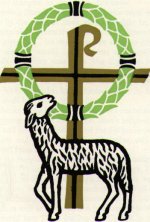 The origin of the Easter egg is based
on the fertility lore of the Indo-European races. To our
pre-Christian ancestors it was a most startling event to
see a new and live creature emerge from a seemingly dead
object. The egg to them became a symbol of spring. Long
ago in Persia people used to present each other with eggs
at the spring equinox, which for them also marked the
beginning of a new year.[58]
The origin of the Easter egg is based
on the fertility lore of the Indo-European races. To our
pre-Christian ancestors it was a most startling event to
see a new and live creature emerge from a seemingly dead
object. The egg to them became a symbol of spring. Long
ago in Persia people used to present each other with eggs
at the spring equinox, which for them also marked the
beginning of a new year.[58]
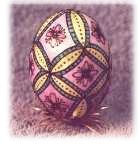 The eggs were usually given to children as Easter
presents along with other gifts. This practice was so
firmly rooted in Germany that the eggs were called
"Dingeier" (eggs that are "owed").
The children were not slow in demanding what was
"owed" to them, and thus developed the many
rhymes in France, Germany, Austria, and England, wherein
youngsters even today request Easter eggs for presents.
In England this custom is called "pace-egging,"
the word "pace" being a corrupted form of
Pasch. Here is a little Austrian song of this kind:
The eggs were usually given to children as Easter
presents along with other gifts. This practice was so
firmly rooted in Germany that the eggs were called
"Dingeier" (eggs that are "owed").
The children were not slow in demanding what was
"owed" to them, and thus developed the many
rhymes in France, Germany, Austria, and England, wherein
youngsters even today request Easter eggs for presents.
In England this custom is called "pace-egging,"
the word "pace" being a corrupted form of
Pasch. Here is a little Austrian song of this kind:
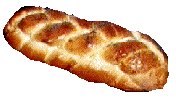
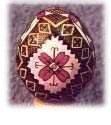 Let us not forget the pig, which offers its meat as a
traditional Easter dish. This animal has always been a
symbol of good luck and prosperity among the
Indo-Europeans. Many traces of this ancient symbolism are
still alive in our time. In some German popular
expressions the word "pig" is synonymous with
"good luck" (Schwein haben). In Hungary the
highest card (ace) in card games is called
"pig" (diszno). Not too long ago it was
fashionable for men to wear little figures of pigs as
good luck charms on their watch chains. More recently
charm bracelets for teen-agers contained dangling pigs.
Savings boxes for children in the figure of a pig (piggy
banks) carry out the ancient symbolism of good luck and
prosperity.
Let us not forget the pig, which offers its meat as a
traditional Easter dish. This animal has always been a
symbol of good luck and prosperity among the
Indo-Europeans. Many traces of this ancient symbolism are
still alive in our time. In some German popular
expressions the word "pig" is synonymous with
"good luck" (Schwein haben). In Hungary the
highest card (ace) in card games is called
"pig" (diszno). Not too long ago it was
fashionable for men to wear little figures of pigs as
good luck charms on their watch chains. More recently
charm bracelets for teen-agers contained dangling pigs.
Savings boxes for children in the figure of a pig (piggy
banks) carry out the ancient symbolism of good luck and
prosperity.